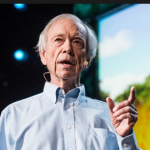
It takes a drought sometimes for a fresh approach to catch on.
An NPR Morning Edition program (January 2015) was about the urban planners in Los Angeles seeing  the need to view the city as a sponge, absorbing water, rather than corralling, then whisking it away down the drain and into our waterways. “Engineering water into submission” is how they talked about it on NPR and it dates back to the Romans and aqueducts. It also is how I got to the idea of retrofitting existing surface parking lots to be spongy ones as part of my neighborhood work as a sustainability advocate.
the need to view the city as a sponge, absorbing water, rather than corralling, then whisking it away down the drain and into our waterways. “Engineering water into submission” is how they talked about it on NPR and it dates back to the Romans and aqueducts. It also is how I got to the idea of retrofitting existing surface parking lots to be spongy ones as part of my neighborhood work as a sustainability advocate.
I live in the Old Town Chinatown (OTCT) neighborhood of Portland, Oregon. One rarely hears the word, sustainability pass anyone’s lips at land use meetings despite the City’s reputation for sustainability, awards for its healthy, connected neighborhoods and a significant number of LEED certified buildings. Similar to skid row landscapes in other medium and large-sized cities, OTCT is peppered with surface parking lots, many waiting for infill or development especially those owned by the redevelopment agency, with centrally located ones returning money in the manner of a cash machine to its owners and managers.
After listening to the broadcast, it wasn’t hard to extend this fresh idea of spongy to the problem we face here in Old Town Chinatown. Not only are the surface parking lots signals of a blighted landscape, but planet-wise they waste precious water; pollute as water run-off contains toxins e.g. gasoline, heavy metals, and nasty Polycyclic Aromatic Hydrocarbons (PAHs) with heavy rain days being particularly worrisome as they may result in combined sewage overflow* (CSO); and they contribute to the overheating of our urban areas as heat islands, “pushing air temperatures up to 10°F (5.6°C) warmer than surrounding areas with open land and vegetation.” Portland State University’s Vivek Shandas has lead an effort to map heat islands and make the tool available on-line.
Aromatic Hydrocarbons (PAHs) with heavy rain days being particularly worrisome as they may result in combined sewage overflow* (CSO); and they contribute to the overheating of our urban areas as heat islands, “pushing air temperatures up to 10°F (5.6°C) warmer than surrounding areas with open land and vegetation.” Portland State University’s Vivek Shandas has lead an effort to map heat islands and make the tool available on-line.
Surface parking lots, impervious surfaces, are a sustainability nightmare.
The advantages to local businesses of “parking” as a requirement by cities to attract employers and shoppers is hardly offset by the damage to our environment, the health of our residents, the local economy (they are not taxed at the same rate as nearby buildings) and to those elements of sustainability often referenced to as “externalities.” Economic factors, money, often reigns supreme in much of local decision making. Of course the costs to mitigate the damage done to our planet and people is born, eventually, by the taxpayer, those living in blighted areas and our children and grandchildren.
“An awful lot of urban planning particularly in poor areas has doubly impoverished
the poor by the ugliness which surrounds them and its understandable that it so difficult to
reach and sustain gentleness there..” John O’Donohue
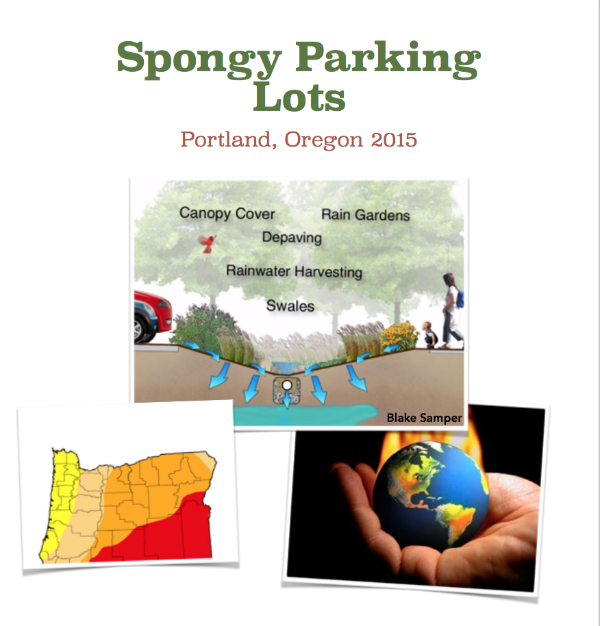 The good news lies in retrofitting many of these surface parking lots. Locally we put together a cross collaboration team of architects, engineers, designers, and our resident expert on low impact development also known as green infrastructure, Maria Cahill. Retrofit tools and methods are readily available for conserving water, then returning it to the ground or filtering it for re-use in nearby parks and gardens; decreasing pollution of nearby rivers and streams especially in times of heavy rain days – projected to increase here in Portland in this age of climate change; reducing the heat by increasing the tree canopy; and using rain gardens, living walls, and swales to significantly reduce the harm done by surface parking lots.
The good news lies in retrofitting many of these surface parking lots. Locally we put together a cross collaboration team of architects, engineers, designers, and our resident expert on low impact development also known as green infrastructure, Maria Cahill. Retrofit tools and methods are readily available for conserving water, then returning it to the ground or filtering it for re-use in nearby parks and gardens; decreasing pollution of nearby rivers and streams especially in times of heavy rain days – projected to increase here in Portland in this age of climate change; reducing the heat by increasing the tree canopy; and using rain gardens, living walls, and swales to significantly reduce the harm done by surface parking lots.
City documents, plans, or RFPs don’t often call out retrofitting surface parking lots. It must happen in some cities because Toronto, for example, published a Guide for Greening Surface Parking Lots which covers mainly new lots and in Portland’s Climate Action Plan decreasing Urban Heat Islands are called out “… especially in areas with populations most vulnerable to heat, through strategies such as revegetation, tree preservation planting and maintenance, de-paving and porous pavement, green infrastructure like bioswales and eco-roofs and site development performance standards.” The Climate Action Plan also addresses sequestering carbon “through increased green infrastructure (trees, plants, soil) and natural areas. Reduce effective impervious areas by 600 acres. Expand the urban forest canopy to cover at least one-third of the city with a mi nimum canopy cover of 25 percent of each residential neighborhood and 15 percent of the central city, commercial and industrial areas.”
nimum canopy cover of 25 percent of each residential neighborhood and 15 percent of the central city, commercial and industrial areas.”
Retrofitting doesn’t necessarily mean a reduction in parking spots if that turns out to be a gating factor in getting local support for a demonstration or pilot project, as we are doing. The effort to retrofit Spongy Parking Lots is an opportunity to take a closer look at mobility options (where “by car” and “more parking” is not the default option for solving issues raised by employers in our central city and by retail merchants and the entertainment/hospitality industry.
The OTCT Community Association, made up of primarily business owners and some non-profit organizations serving the homeless and providing addiction treatment, recently formed a new committee, Transportation and Mobility of which “Mobility & Parking” is on the agenda. Too soon to tell how it will function as a gateway to fresh ideas and innovation, but our team is ready with the recommendation for our redevelopment agency in collaboration with our Bureaus of Environmental Services and Planning and Sustainability invest in demonstration project for spongy parking lots here in OTCT given their number and the harm they produce, and, in terms of the neighborhood’s role in the emerging mobility movement to get people out of their cars in this age of climate change. Be it a private or public surface parking lot  doesn’t matter as long as the owner, along with a majority of Oregonians, “values the state’s natural beauty, outdoor recreation opportunities, and relatively clean air and water. They also value a good economy, but they want an approach to economic development that recognizes the importance of the state’s natural environment to its quality of life.”
doesn’t matter as long as the owner, along with a majority of Oregonians, “values the state’s natural beauty, outdoor recreation opportunities, and relatively clean air and water. They also value a good economy, but they want an approach to economic development that recognizes the importance of the state’s natural environment to its quality of life.”
We have been identifying our spongy champions working in the many agencies that would be involved in bringing a demonstration project forward and raising awareness through social media, especially videos on our PDXdowntowner YouTube channel. There is our webpage at www.spongyparkinglots.com where we have included an overview of spongy parking lots, relevant links to videos, articles and whitepapers, and an overview of our team members.
Like our Facebook page to indicate you support thinking spongy when it comes to surface parking lots.
Ruth Ann Barrett, Portland, Oregon, August 31, 2016
Note:
*CSO has been a big issue in two cities I have lived in – Portland, Oregon and San Francisco, California. Portland’s CSO Control Program (December 2011) reduced CSOs to the Columbia Slough by more than 99% and to the Willamette River by 94%.
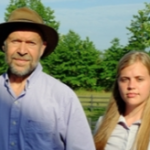 After the last meeting I returned to my office and found in my inbox a newly added video to YouTube entitled, Young People’s Burden, a conversation between the renowned climate scientist Dr. James Hansen of Columbia University’s Earth Institute and his granddaughter Sophie Kivlehan. I ask you to take 17 minutes to listen to Dr. Hansen and Sophie talk about how they both are plaintiffs in the lawsuit filed by Our Children’s Trust against the federal government in their efforts to secure “the legal right to a stable climate and a healthy atmosphere for all present and future generations” the very essence of the sustainability movement.
After the last meeting I returned to my office and found in my inbox a newly added video to YouTube entitled, Young People’s Burden, a conversation between the renowned climate scientist Dr. James Hansen of Columbia University’s Earth Institute and his granddaughter Sophie Kivlehan. I ask you to take 17 minutes to listen to Dr. Hansen and Sophie talk about how they both are plaintiffs in the lawsuit filed by Our Children’s Trust against the federal government in their efforts to secure “the legal right to a stable climate and a healthy atmosphere for all present and future generations” the very essence of the sustainability movement.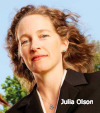 Trust. It is less than twenty minutes and like the Jim Hansen interview I urge you to share it with colleagues and especially your youthful friends and family members.
Trust. It is less than twenty minutes and like the Jim Hansen interview I urge you to share it with colleagues and especially your youthful friends and family members.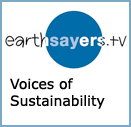 bove videos are in the EarthSayers.tv special collection, Climate Justice, which compliments our more general climate change and climate change risk special collections. EarthSayers.tv is a specialized search engine to all curated, video content addressing sustainability and advancing those speaking on behalf of Mother Earth and her children.
bove videos are in the EarthSayers.tv special collection, Climate Justice, which compliments our more general climate change and climate change risk special collections. EarthSayers.tv is a specialized search engine to all curated, video content addressing sustainability and advancing those speaking on behalf of Mother Earth and her children.
 Program for Climate Change Communication. They conduct scientific research on public climate change knowledge, attitudes, policy preferences, and behavior, and the underlying psychological, cultural, and political factors that influence them. Of particular interest was their audience research,
Program for Climate Change Communication. They conduct scientific research on public climate change knowledge, attitudes, policy preferences, and behavior, and the underlying psychological, cultural, and political factors that influence them. Of particular interest was their audience research,  United Nations High Commissioner for Human Rights on “
United Nations High Commissioner for Human Rights on “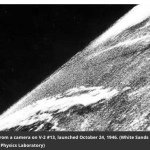 I was reminded of this 1946 photograph of Earth,
I was reminded of this 1946 photograph of Earth,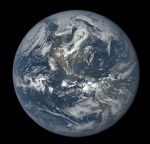 to the breathtaking visualizations of today.
to the breathtaking visualizations of today. hopefully it translates to a better understanding and love “in here” nothing short of a change in consciousness, a move from head to heart guided by the Laws of Nature.
hopefully it translates to a better understanding and love “in here” nothing short of a change in consciousness, a move from head to heart guided by the Laws of Nature. no sound in space. Sound does exist as electromagnetic vibrations. The specially designed instruments on board the Voyager and other probes, picked up and recorded these vibrations, all within the range of human hearing (20-20,000 cycles per second).” – NASA Space Recordings Of Earth, Published on Aug 13, 2011.
no sound in space. Sound does exist as electromagnetic vibrations. The specially designed instruments on board the Voyager and other probes, picked up and recorded these vibrations, all within the range of human hearing (20-20,000 cycles per second).” – NASA Space Recordings Of Earth, Published on Aug 13, 2011.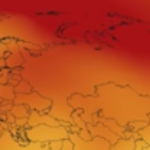 which shows temperature changes from 1880 to 2015 as a rolling five-year average. Orange colors represent temperatures that are warmer than the 1951-80 baseline average, and blues represent temperatures cooler than the baseline.
which shows temperature changes from 1880 to 2015 as a rolling five-year average. Orange colors represent temperatures that are warmer than the 1951-80 baseline average, and blues represent temperatures cooler than the baseline. elected officials, are active in the learning cycle. An example is another recent video,
elected officials, are active in the learning cycle. An example is another recent video, 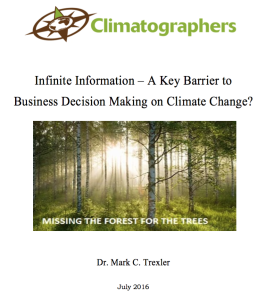 Mark and Laura have some helpful resources for users to learn how to effectively use The Climate Web. For one thing, see this
Mark and Laura have some helpful resources for users to learn how to effectively use The Climate Web. For one thing, see this 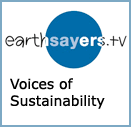
 artist Isabella Borgeson shares her poem on the aftermath of Super Typhoon Haiyan (Yolanda), one of the strongest storms to ever hit the Philippines (November 8, 2013). Four minute video published by Climate One on YouTube on May 14, 2016.
artist Isabella Borgeson shares her poem on the aftermath of Super Typhoon Haiyan (Yolanda), one of the strongest storms to ever hit the Philippines (November 8, 2013). Four minute video published by Climate One on YouTube on May 14, 2016.  This multimedia video produced by the Wisconsin Educational Communications Board features Elijah Furquan, a spoken word artist in Milwaukee, WI, who describes the effects of extreme heat on his urban community.Uploaded to YouTube on Dec 22, 2010. (2:46) Click
This multimedia video produced by the Wisconsin Educational Communications Board features Elijah Furquan, a spoken word artist in Milwaukee, WI, who describes the effects of extreme heat on his urban community.Uploaded to YouTube on Dec 22, 2010. (2:46) Click 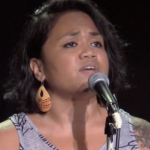 Spoken word artist Terisa Siagatonu (Samoan) shares her poem on climate change and talks about the realities of climate change from her unique perspective as a spoken word artist/arts educator, community activist, and Project Director for PIER: the Pacific Islander Education and Retention project at UCLA, an access project that exists to combat the low matriculation rates of Pacific Islander students into higher education by offering services ranging from free tutoring, mentorship, and peer advising to Pacific Islander high school students in Los Angeles. Published on May 23, 2016 by Climate One.
Spoken word artist Terisa Siagatonu (Samoan) shares her poem on climate change and talks about the realities of climate change from her unique perspective as a spoken word artist/arts educator, community activist, and Project Director for PIER: the Pacific Islander Education and Retention project at UCLA, an access project that exists to combat the low matriculation rates of Pacific Islander students into higher education by offering services ranging from free tutoring, mentorship, and peer advising to Pacific Islander high school students in Los Angeles. Published on May 23, 2016 by Climate One. 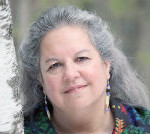
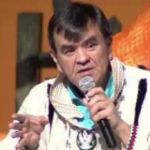

 the need to view the city as a sponge, absorbing water, rather than corralling, then whisking it away down the drain and into our waterways. “Engineering water into submission” is how they talked about it on NPR and it dates back to the Romans and aqueducts. It also is how I got to the idea of retrofitting existing surface parking lots to be spongy ones as part of my neighborhood work as a sustainability advocate.
the need to view the city as a sponge, absorbing water, rather than corralling, then whisking it away down the drain and into our waterways. “Engineering water into submission” is how they talked about it on NPR and it dates back to the Romans and aqueducts. It also is how I got to the idea of retrofitting existing surface parking lots to be spongy ones as part of my neighborhood work as a sustainability advocate.

 nimum canopy cover of 25 percent of each residential neighborhood and 15 percent of the central city, commercial and industrial areas.”
nimum canopy cover of 25 percent of each residential neighborhood and 15 percent of the central city, commercial and industrial areas.”

 Two disconnected events yesterday and today were linked in my mind to the large, open spaces of the West and the challenges we face in striving for a sustainable future. The first was spotting this marquee yesterday with “The Sustainability Secret” catching my eye. The cowspiracy took longer to process.
Two disconnected events yesterday and today were linked in my mind to the large, open spaces of the West and the challenges we face in striving for a sustainable future. The first was spotting this marquee yesterday with “The Sustainability Secret” catching my eye. The cowspiracy took longer to process.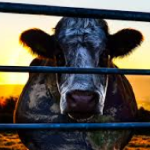 he link to a sustainability secret being secondary as suggested in the title. After
he link to a sustainability secret being secondary as suggested in the title. After 